Overlapping toes - causes and treatment
Ronnie on our sales team asked me to talk a bit about overlapping toes. Overlapping toes are a problem that increases with age, although overlapping toes can be found even in infants.
What causes overlapping toes? First, let’s define what an overlapping toe actually is.

When anatomists discuss the body, they speak in reference to body planes. In the image to the left, the sagital, 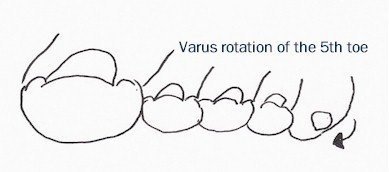 frontal and transverse planes are defined. Toe deformities can be found in all three planes. For instance, hammer toes are a deformity of the sagital plane. One of the more common toe deformities in children is a frontal plane rotational deformity where the toe rotates in a position called varus rotation (see image to the right). But overlapping toes are in the remaining plane, the transverse plane.
frontal and transverse planes are defined. Toe deformities can be found in all three planes. For instance, hammer toes are a deformity of the sagital plane. One of the more common toe deformities in children is a frontal plane rotational deformity where the toe rotates in a position called varus rotation (see image to the right). But overlapping toes are in the remaining plane, the transverse plane.
What is the cause of overlapping toes?
Overlapping toes are caused by four factors;
- Mal-alignment of the long flexor and long extensor tendons.
- Translation of the plantar plate and attached structures
- Rupture of the plantar plate
- Trauma and arthritis
Mal-alignment of the long flexor and long extensor tendons is an interesting phenomenon that can occur due to a number of structural conditions in the foot. To understand this concept of mal-aligned tendons, let’s take a second to think like a tendon. The long flexor (bottom of the toe) and the long extensor (top of the toe) originate in the calf as moderately strong muscles and terminate in the most terminal aspect of the toe (the distal phalanx). The primary function of the long flexor and extensor tendons is to stabilize the foot as your body passes over it. Although we’d tend to think that these tendons are used to control the function of the toe, these tendons use the toes to make the foot rigid and increase the lever arm of the foot. Essentially the toes are anchor points for these tendons and the actual function of the toes is somewhat of an afterthought.
What causes the long flexor and extensor tendons to become mal-aligned? As these tendons descend the leg and round the front and the back of the ankle, the tendons then pull in a straight direction against the toes. Any change in the shape of the foot between the ankle and the toes can result in an eccentric pull on the toes. Structural changes n the foot that can result in mal-alignment of the long and short flexor tendons include:
- Skew foot
- Pronation
- Metatarsus adductus
- Supination
- Fractures resulting in poor alignment
With each step, eccentric pull on the toe progressively results in deviation in the toe that results in the transverse plane deformity we call an overlapping toe.
Translation of the plantar plate and associated structures is what causes the most common instance of overlapping toes, the second toe overlapping the great toe, particularly in cases of bunions. As the first metatarsal ‘adducts’ (moves to the center line of the body), it places eccentric load on the great toe resulting in the characteristic ‘abduction’ of the great toe towards the second toe. This widening of the first intermetatarsal space (the space between the first and second metatarsals) places tension on the intermetatarsal ligament. This tension results in the medial displacement of the base of the second toe. This characteristic ‘abduction’ of the great toe and ‘adduction’ of the second toe results in the characteristic overlapping we see in this video.
Rupture of the plantar plate is an often discussed and often over-diagnosed condition that results in instability of the toe. In all cases of plantar plate rupture that I see, the translation of the toe is greatest in the sagital plane and to a lesser degree in the transverse plane.
Trauma and arthritis are the two least common reasons for overlapping toes. Mal-alignment post-fracture can result in a poorly aligned toe that results in overlapping. Arthritis, particularly rheumatoid arthritis, displaces the toe in unpredictable directions resulting in overlapping and mal-alignment.
Treatment of overlapping toes
Treatment of overlapping toes can be accomplished with conservative and surgical methods of care. Toe Straighteners (also called Budin Splints) can be used to ‘lasso’ toes into position. Toe Loops and Crest Pads are used to align rotational deformities of the toes. Surgical solutions often focus on metatarsal head wedge resections to align the toe. In some cases, partial metatarsal head resections are used to align the toes. In severe cases of overlapping second toes with asymptomatic bunions, amputation of the toe is indicated.
As you can see, overlapping and mal-aligned toes can result from a number of causes and treatment varies on a case by case basis.
Jeff
Medical Advisor
Myfootshop.com









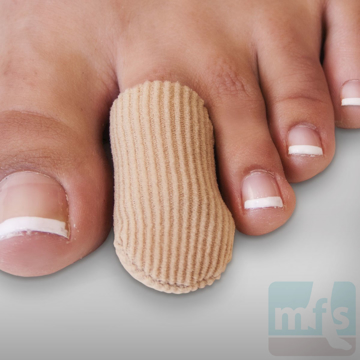
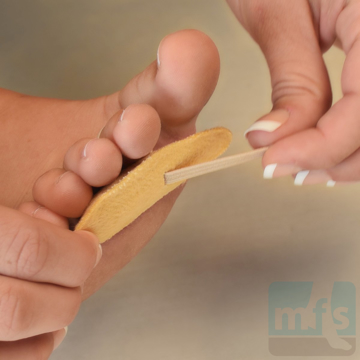
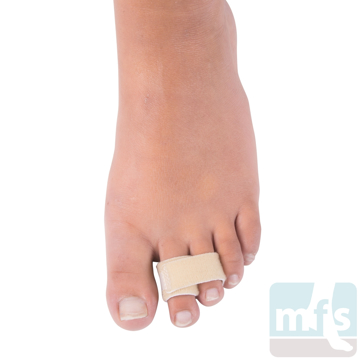
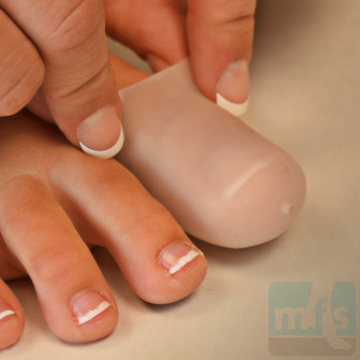
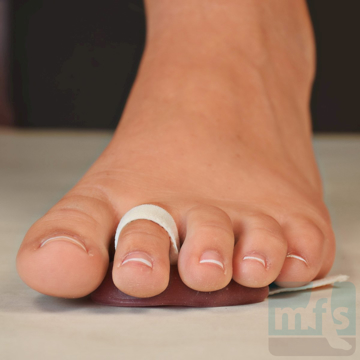




You can use a <a href="/gel-bunion-spacer-1-1">Gel Bunion Spacer</a> but I'd guide you into the <a href="/gel-bunion-spacer-with-stay-put-loop">Gel Bunion Spacer With Stay-Put Loop</a> so that you don't loose the spacer. Each case of overlapping toes is a bit different and can work to bump a spacer out from between the toes. That's why the Stay-Put-Loop is going to be so helpful.<br>
Another option would be the <a href="/toe-straightener-single-toe">Toe Straightener.</a> The Toe Straightener will really help to hold that second toe in place. I wouldn't recommend using both the Toe Straightener and Gel Bunion Separator together. It's an either/or proposition.<br>
<br>
<a href="/jeffrey_a_oster_dpm_cv">Jeffrey A. Oster, DPM</a><br>
Medical Director<br>
Myfootshop.com